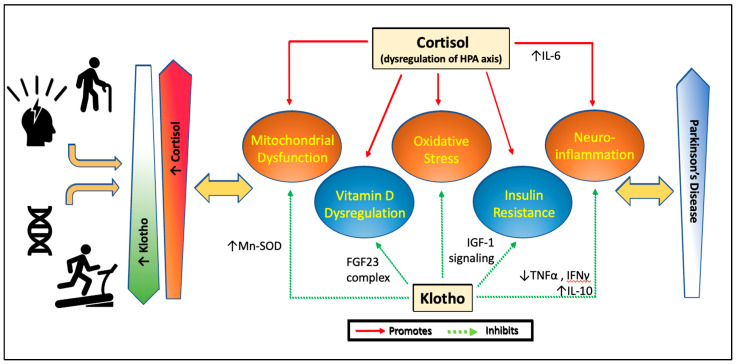Figure 1.
Proposed model for effects of cortisol and klotho on pathways linked to Parkinson’s disease. With stress and aging, cortisol levels increase due to dysregulation of the HPA axis and klotho levels decrease. Exercise decreases cortisol levels and increases klotho levels. Certain genetic variations may further dampen cortisol sensitivity and cellular response to stress or increase klotho levels or change its function. Chronic elevation of cortisol with aging or stress leads to increase in mitochondrial dysfunction, oxidative stress and activation of inflammatory cytokines, while promoting insulin resistance and correlating with lower vitamin D levels. Klotho normally protects mitochondrial structure and function, decreases oxidative stress, decreases inflammatory states, suppresses the downstream signaling pathway that leads to insulin resistance, and downregulates vitamin D metabolizing enzymes to control active vitamin D levels. This dysregulation of cortisol and reduction in klotho with aging and stress, important risk factors for PD, are hypothesized to affect the course of PD. Changes in cortisol and klotho in disease conditions may affects signs, symptoms, or progression of PD.

